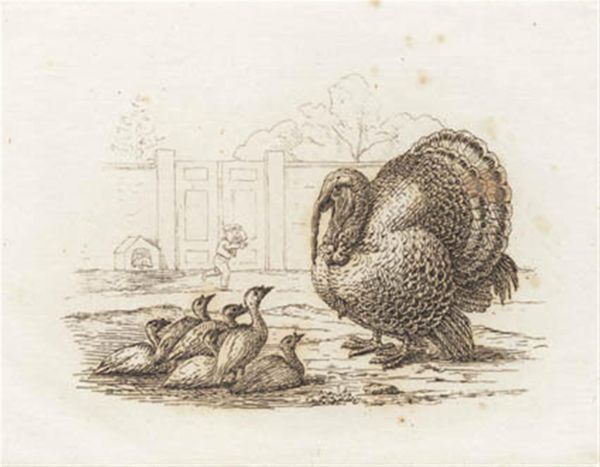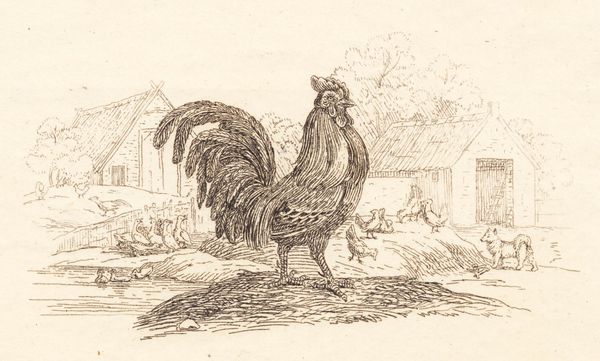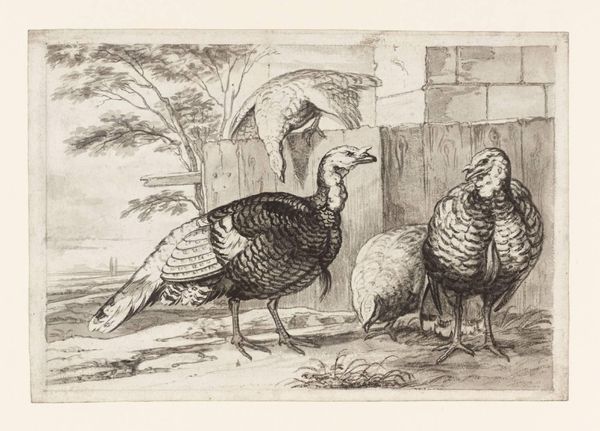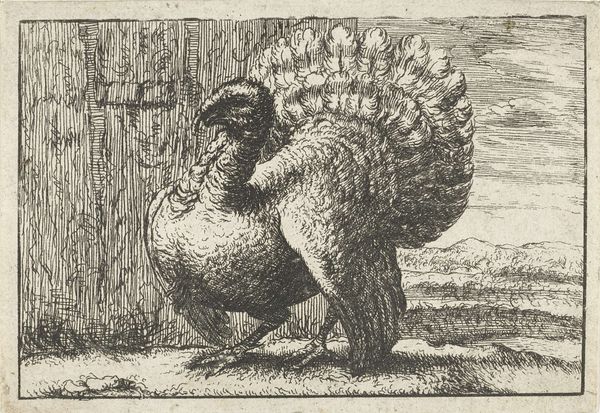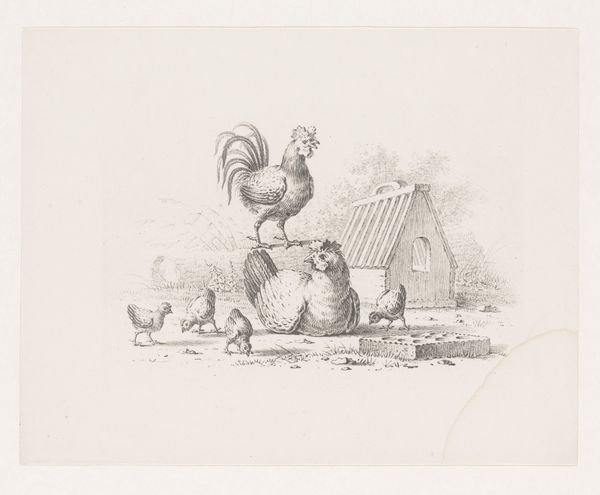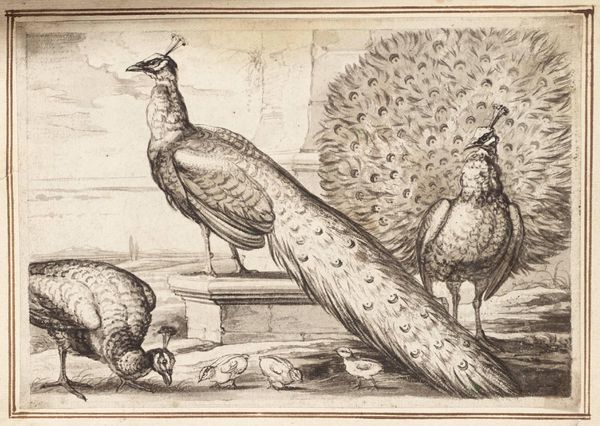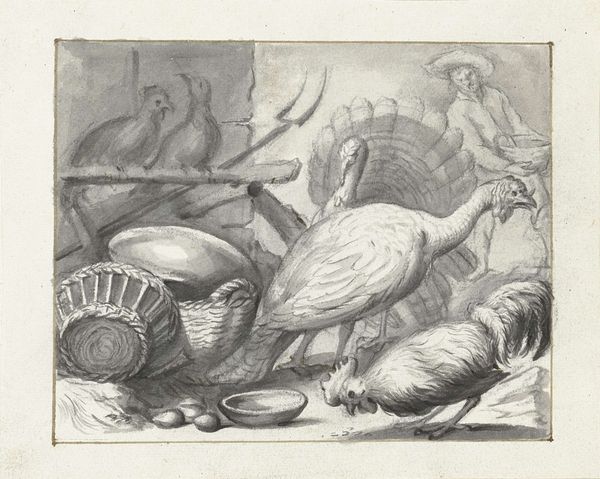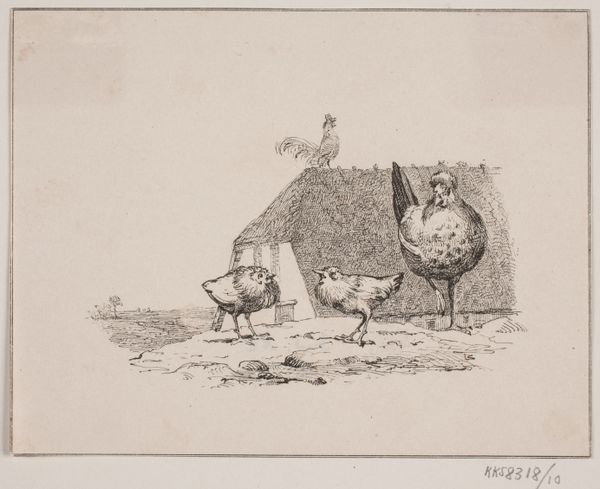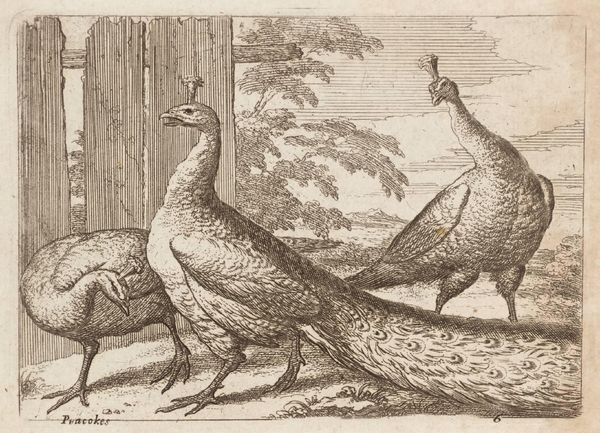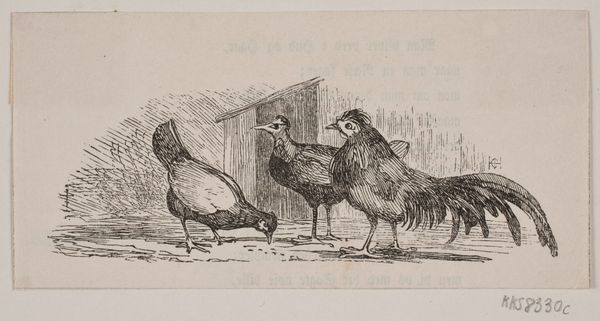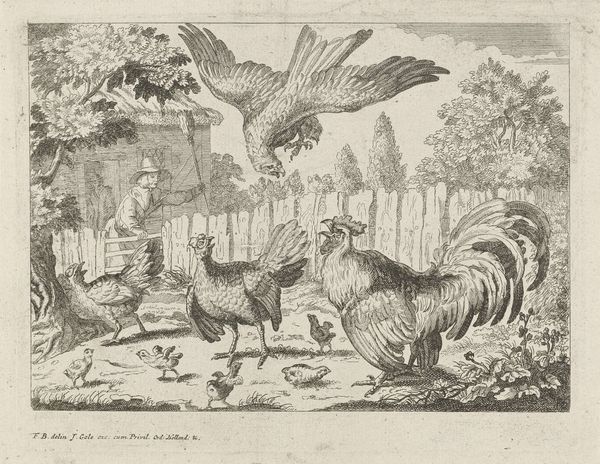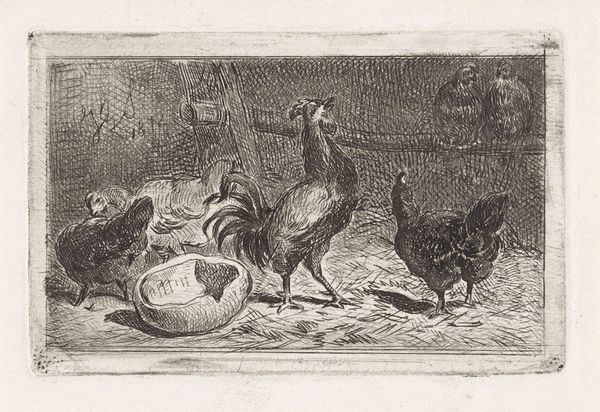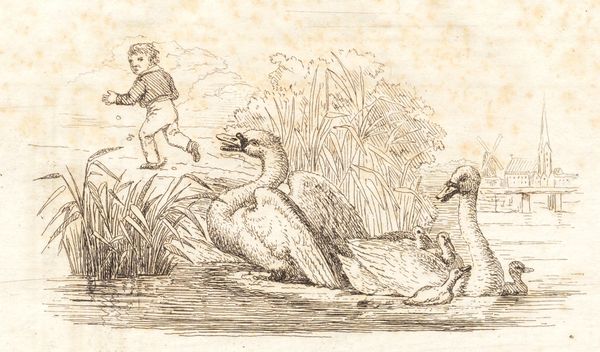
Illustration til "Halvhundrede Fabler for Børn" af Hey 1834
0:00
0:00
drawing, print, engraving
#
drawing
#
narrative-art
# print
#
figuration
#
romanticism
#
line
#
genre-painting
#
engraving
Dimensions: 106 mm (height) x 125 mm (width) (bladmaal)
Curator: Here we have Martinus Rørbye's illustration for "Halvhundrede Fabler for Børn" by Hey, dated 1834. It’s an engraving, currently held in the collection of the SMK - Statens Museum for Kunst. What catches your eye about this scene? Editor: Well, firstly, that utterly massive turkey! It has such presence. It's comical, but there's also something vaguely threatening about its scale. What strikes me as really cool is that fine lines create texture, really gives depth. Curator: It is a beautiful example of line engraving, where the artist uses a burin to cut lines into a metal plate. The density and direction of those lines are critical for creating form and shadow. Think about the labor involved in such a precise process. Editor: Oh, absolutely! It must have taken a staggering amount of time to achieve this level of detail. The narrative seems playful— a child running with some kind of treasure, perhaps something stolen, and is the turkey the guardian of the farm, or is he actually in danger from the birds? And there is a cute doghouse as well. All a little fable for the kids, huh? I wonder how this print circulated back in the day, did many children own prints like this? Curator: That is the exact thing! This piece reveals how art, even within children’s literature, participates in broader cultural and economic exchanges. Engravings allowed for the wider dissemination of images beyond paintings or drawings only accessible to the wealthy. It suggests a developing market for children's literature and illustrations. Editor: That totally alters my read on it, as a physical object and an index for its age. You can’t ignore that romanticist quality – it invites you into its contained world through the quality of the engraving, which adds an extra texture to the feel of the artwork, to be experienced as if stepping back in time! There is something intimate that transcends simple craft of engraving for print! Curator: And what about the act of reading in the 1830s? Who would be engaging with these fables? Which hands handled the very papers which held the imprint, to return again to labor! Editor: Oh that's clever. Considering all of this it gives me something entirely new to ponder on with this piece - many pieces within many systems... I have loved having a gander. Curator: Likewise; viewing it as a part of its time reveals how it engaged in broader social exchanges, I have loved considering our chat.
Comments
No comments
Be the first to comment and join the conversation on the ultimate creative platform.
